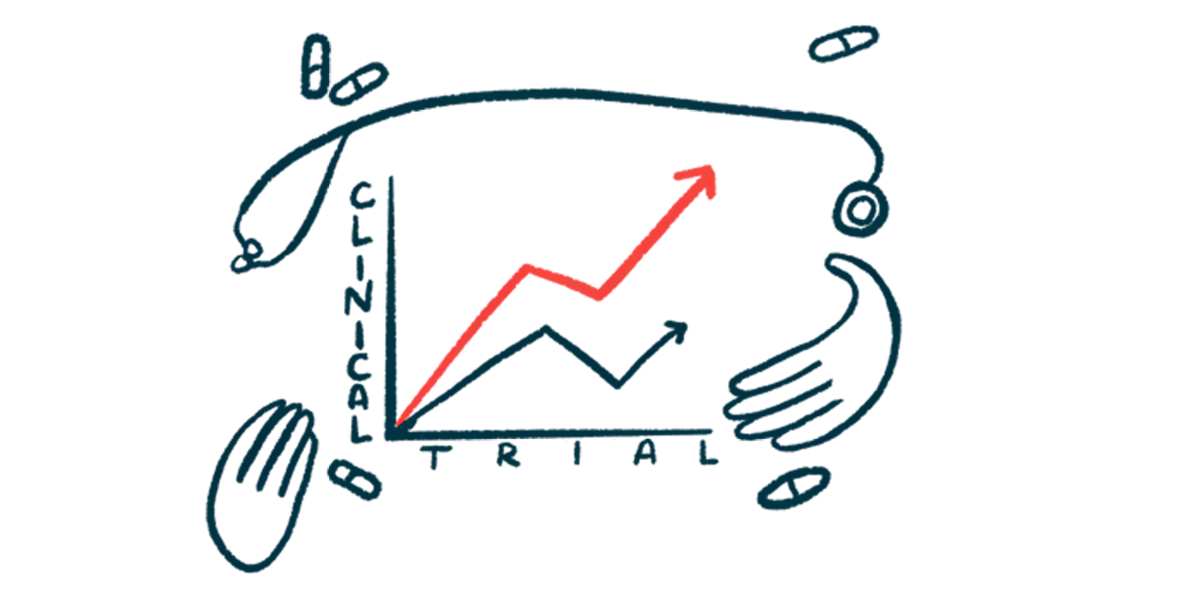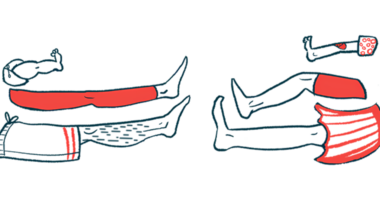GT-02287 safely eases Parkinson’s motor symptoms in study
Improvements seen for patients within three months of starting oral therapy

The oral therapy GT-02287, being developed by Gain Therapeutics for people with Parkinson’s disease with or without mutations in the GBA1 gene, was shown to ease motor symptoms and help patients maintain routine daily activities over three months while being safe and well tolerated.
That’s according to interim data from an open-label Phase 1b clinical study (NCT06732180) that’s testing the experimental treatment among Parkinson’s patients at seven locations in Australia. The study is expected to conclude at the end of this year. In the meantime, the company has been cleared to launch an extension that will allow participants to continue on GT-02287 for as long as one year.
Importantly, according to Gene Mack, Gain’s president and CEO, the new data showed “trending improvements” for patients within three months of starting treatment.
“We are pleased to be able to present encouraging early takeaways from our Phase 1b study,” Mack said in a company press release.
The data were presented in a poster by Gain’s chief medical officer, Jonas Hannestad, MD, PhD, at the Movement Disorders Society (MDS) International Congress of Parkinson’s Disease and Movement Disorders, held earlier this month in Honolulu. The poster was titled “GT-02287 in Parkinson’s Disease: Interim data from a Phase 1b study.” Mack said last month that additional study data are expected toward the end of this year.
Mutations in the GBA1 gene are a known risk factor for Parkinson’s. The gene encodes GCase, an enzyme that breaks down fatty molecules for recycling. When mutated, the enzyme loses activity, leading to a buildup of toxic deposits, including those formed by misfolded alpha-synuclein — a hallmark of the disease.
GT-02287 is a small molecule designed to bind the GCase enzyme and correct how it folds, helping to restore its activity. This is expected to prevent misfolded alpha-synuclein from forming toxic deposits that damage nerve cells in the brain and drive symptoms of Parkinson’s.
In an abstract for the poster, the researchers wrote that “GT-02287 modulates molecular pathways implicated in [Parkinson’s].” As such, the team wrote, “this novel compound has the potential to slow disease progression in GBA1-[linked Parkinson’s] and possibly in idiopathic [Parkinson’s].” Idiopathic means that the cause of the disease is unknown.
Data show improvements in daily living activities with GT-02287
In a Phase 1 clinical study involving 72 healthy volunteers, GT-02287 reached expected levels in the cerebrospinal fluid surrounding the brain and spinal cord, indicating that the therapy can enter the brain. GT-02287 also partially restored activity of the GCase enzyme and was safe and well tolerated.
The still-ongoing Phase 1b clinical study is fully enrolled, after recruiting 21 adults who had been diagnosed with Parkinson’s for less than seven years. All participants have either idiopathic disease or carry mutations in GBA1. Among them, 18 are men and three are women. Their mean age is 63.5 years.
The goal of the study is to test the safety and tolerability of GT-02287 when taken daily, by mouth, for 90 days, or about three months. At the study’s start, 18 patients were on stable treatment with levodopa or other medications for Parkinson’s. Two had never been treated. Two had undergone deep brain stimulation.
Data from 18 patients showed that GT-02287 was safe and generally well tolerated. The most common side effects were headache, temporary increases in liver enzymes, diarrhea, fatigue, and nausea. Most side effects (85%) were mild. One patient stopped treatment due to panic attacks, nausea, and headache, and three others reduced their dose due to headache or elevated liver enzymes.
Changes in the MDS Unified Parkinson’s Disease Rating Scale (MDS-UPDRS) — which looks at nonmotor symptoms (Part I), daily living activities (Part II), and motor symptoms (Part III) — were measured in nine patients who completed three months of treatment. In the MDS-UPDRS, lower scores indicate better function.
The stability and trending improvements we have observed in MDS-UPDRS scores [were] not something we were expecting to see with 90 days of dosing.
After three months of treatment with GT-02287, MDS-UPDRS Part II scores decreased by an average of 0.8 points, while those of MDS-UPDRS Part III decreased by an average of 3.8 points, indicating improvements in daily living activities and motor function. There were no observed changes in nonmotor symptoms.
“The stability and trending improvements we have observed in MDS-UPDRS scores [were] not something we were expecting to see with 90 days of dosing,” Mack said.
Participants who complete the first three months of dosing can continue to receive GT-02287 for another nine months to further evaluate the treatment’s safety and biomarkers. Of the 21 enrolled participants, about half have said they would like to continue in the study extension.







